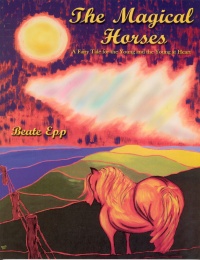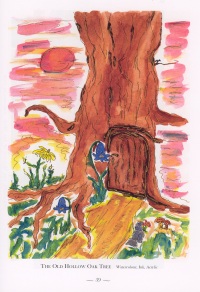| ________________
CM . . .
. Volume XII Number 18 . . . .May 12, 2006
excerpt:
When Leo and Poldy Witherspoon overhear stories about magical horses with coats of rainbow colour, they are immediately intrigued. The twin mice seek more information from their village leader. Gordon Saunders reminisces about peaceful times long ago and the special magic that "brought many blessings and much love and happiness to all living things," but his knowledge isn't complete. Only Seraphina, "The Mother of All Mice," would know all the secrets, so Leo and Poldy set off to reach the "land behind the rainbow," armed with a map, a letter and special powder to throw in the eyes of predators. Trouble plagues the twins on their journey through the Dark Evergreens. Poldy loses her backpack filled with food, Leo slips in the Deep Valle of Rocks, and they are stalked by Winona the white owl. Benevolent forces, such as the Ghost of the Four Winds and a sandhill crane named Maximilian come to their aid. When the pair finally meet Seraphina, they are anxious to find out some answers. The Mother of All Mice confirms that the horses brought peace and happiness, but as for the particulars, "Many times we must simply accept what we are given and the good things that happen to us, and be thankful." Seraphina’s convoluted story continues with an odd description of the horses being born from coconuts growing on an island. When humans became greedy and started to covet the animals, the Witch in the Roses devised a curse to remove the horses' colours. The magic then could not spread, and the horses disappeared. Seraphina shares her hope for the future and instructs Leo and Poldy to write down everything they remember about their journey and then share the book with all mice and eventually the wider world, since "It is up to humans to bring love and happiness to others to unlock the curse."
Not recommended. Linda Ludke is a librarian in London, ON.
To comment
on this title or this review, send mail to cm@umanitoba.ca.
Copyright © the Manitoba Library Association. Reproduction for personal
use is permitted only if this copyright notice is maintained. Any
other reproduction is prohibited without permission.
NEXT REVIEW |
TABLE OF CONTENTS FOR THIS ISSUE
- May 12, 2006.
AUTHORS |
TITLES |
MEDIA REVIEWS |
PROFILES |
BACK ISSUES |
SEARCH |
CMARCHIVE |
HOME |

 Wading through the wordy text requires much patience. The pacing is problematic with events recapped and repeated several times. The text loses momentum with lengthy descriptions of breakfast meals and snacks before bedtime, as well as during the several community meeting scenes where the entire plot is retold and summarized. Proofreading errors such as "It's leavening is baking soda" also mar the text.
Wading through the wordy text requires much patience. The pacing is problematic with events recapped and repeated several times. The text loses momentum with lengthy descriptions of breakfast meals and snacks before bedtime, as well as during the several community meeting scenes where the entire plot is retold and summarized. Proofreading errors such as "It's leavening is baking soda" also mar the text.